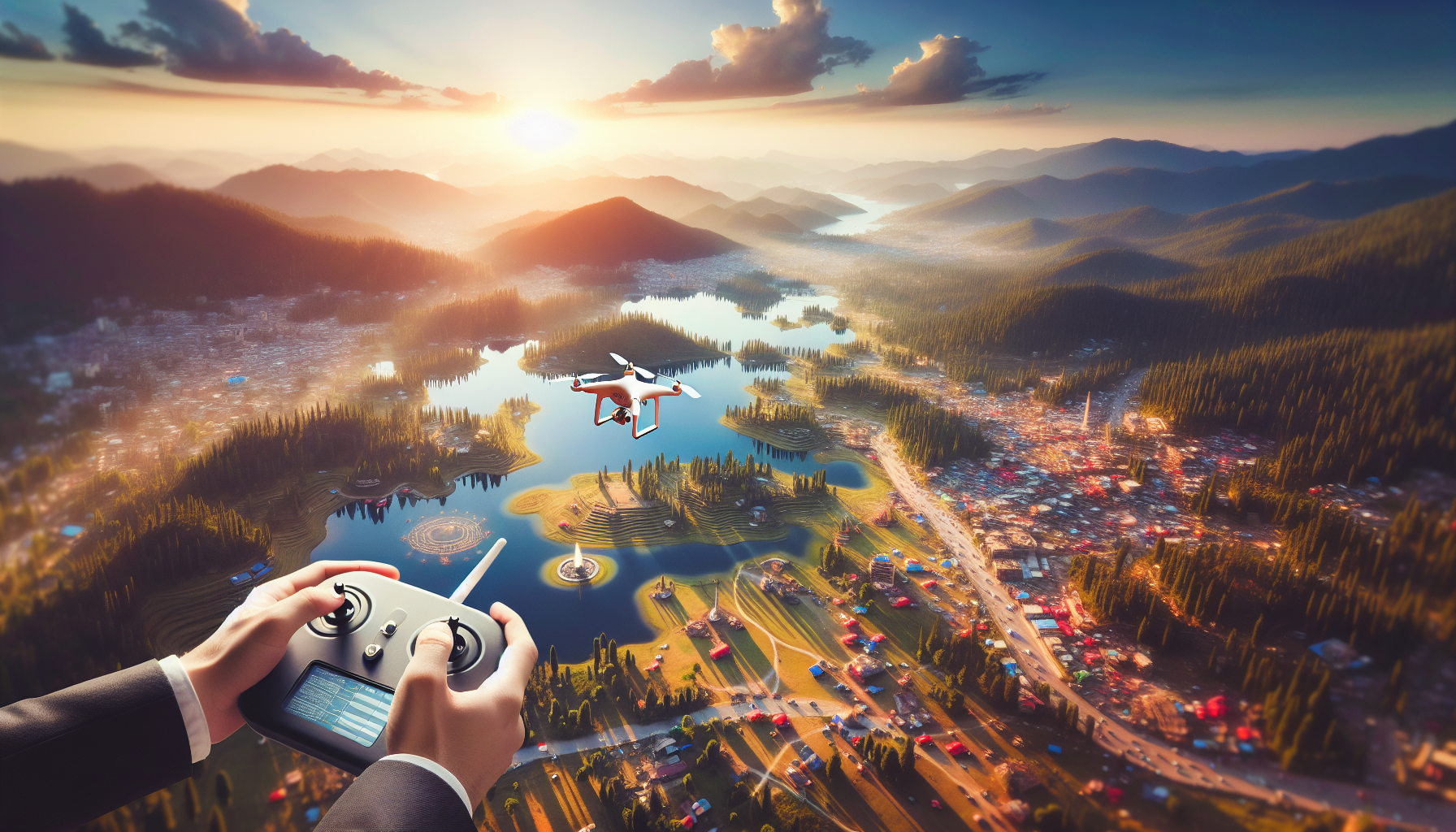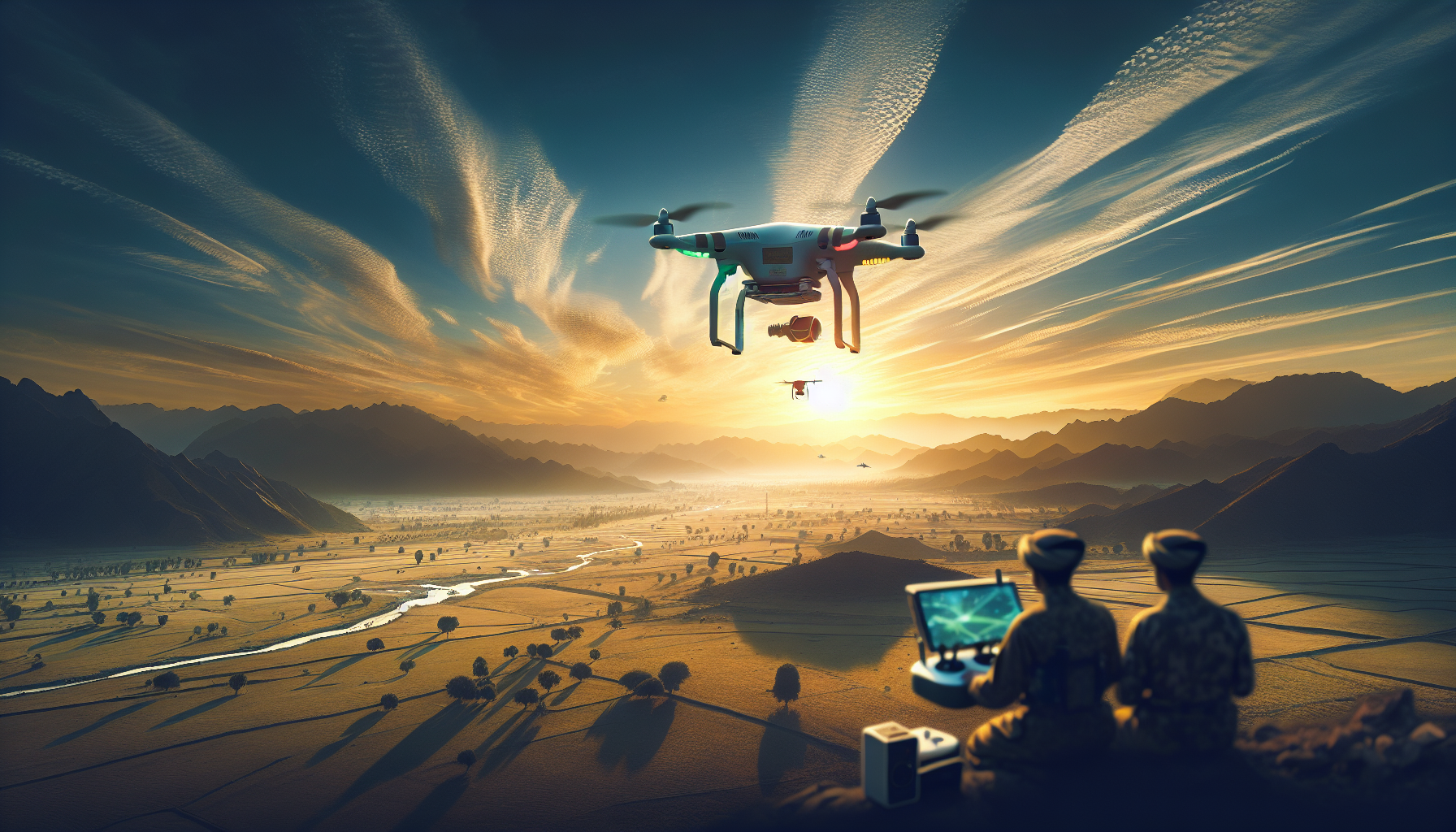As someone who loves capturing the vibrant landscapes of Pakistan with my drone, I’ve learned the importance of understanding local regulations. The Pakistan Civil Aviation Authority (PCAA) has specific guidelines. For instance, drones must be registered, and operators need to obtain permission for commercial use. Once, I almost faced a hefty fine because I was unaware of a restricted zone in Lahore. To avoid such pitfalls, I recommend checking the PCAA’s latest updates before any flight. Also, be considerate of privacy concerns. Drones can easily invade personal spaces, so always respect locals’ privacy. For detailed rules, the PCAA's official website is invaluable.
Navigating Drone Photography Regulations in Pakistan: Compliance Essentials
Drone photography in Pakistan offers breathtaking opportunities, from capturing the majestic peaks of the Himalayas to the vibrant streets of Lahore. However, understanding the legal framework is crucial for enthusiasts and professionals alike. When I started flying drones, I was overwhelmed by the regulations. But with some guidance, I found it manageable.
First, ensure your drone is registered with the Pakistan Civil Aviation Authority. This step is mandatory for all drones weighing over 250 grams. Believe me, skipping this could lead to hefty fines or confiscation. Moreover, always keep your registration certificate handy. It can save you from potential hassles during spontaneous checks.
Understanding the no-fly zones is another critical aspect. For instance, flying around sensitive areas like military installations or airports is strictly prohibited. On my first outing, I almost flew near a restricted zone. Luckily, a friendly passerby warned me in time! Apps like Airmap can help you navigate these areas safely.
Safety should be a priority, so maintain a line of sight with your drone. This habit not only ensures compliance but also prevents accidents. I learned this the hard way when my drone veered off into a tree. It was an expensive lesson, but it reinforced the importance of staying vigilant.
Lastly, respecting privacy is key. Avoid capturing images of people or private property without permission. This practice not only aligns with local customs but also builds trust within the community. By following these tips, you’ll enjoy the art of drone photography while staying compliant with local laws.
Key Legal Considerations for Drone Photography in Pakistan: What You Need to Know

When venturing into drone photography in Pakistan, understanding the legal landscape is crucial. The Pakistan Civil Aviation Authority (PCAA) sets out specific regulations for drone operations. As a photographer, ensuring compliance with these rules not only enhances safety but also protects you from potential legal issues.
One critical aspect is obtaining the necessary permissions. Operating a drone without a PCAA permit can lead to fines or confiscation of your equipment. I learned this the hard way during an early morning shoot in Lahore, where an unexpected police officer kindly reminded me of the need for prior approval. Trust me, it’s best to have your paperwork in order!
Additionally, always keep an eye on restricted zones. Places like airports, military bases, and certain government buildings are no-fly areas. Violating these restrictions can result in severe consequences. A fellow photographer once shared how a lack of awareness led to a tense interaction with security personnel near a sensitive site. It’s worth the effort to research your location thoroughly.
Drone weight also matters. For drones over 250 grams, registration with the PCAA is mandatory. Ignoring this can cause complications, especially when traveling between provinces. According to BBC, many countries have similar regulations to ensure aerial safety.
For those new to drone photography, familiarizing yourself with local drone laws is a must. It’s a small step that could save you from a lot of hassle down the line. Happy flying, and remember to keep it legal!
Safety Protocols for Drone Operations in Pakistan: Best Practices
Operating drones in Pakistan can be an exhilarating experience, but it’s crucial to prioritize safety. Having spent countless weekends exploring the breathtaking landscapes from above, I’ve learned that adhering to certain safety protocols is essential. First and foremost, always conduct a pre-flight checklist. This simple habit has saved me from potential mishaps numerous times. Ensure your drone’s battery is fully charged, and its propellers are securely attached.
Understanding local regulations is another key aspect. In Pakistan, certain areas are designated as no-fly zones, such as near airports and military installations. I recall a close call when I almost launched my drone near a restricted area, only to be reminded by a local enthusiast about the specific restrictions. You can avoid such situations by familiarizing yourself with the guidelines provided by the Pakistan Civil Aviation Authority.
Weather conditions in Pakistan can be unpredictable. Always check the forecast before heading out. I once underestimated the impact of sudden gusts of wind in the northern areas, and it taught me the importance of being prepared for any eventuality. Investing in a quality drone with GPS stabilization can help you maintain control in challenging conditions.
Another crucial aspect is post-flight procedures. Properly reviewing and processing your footage not only enhances the quality but also helps identify areas for improvement. If you’re keen on learning more about this, delve into the new techniques and tools available for post-processing in 2025.
Lastly, always respect the privacy of others. It’s easy to get carried away with capturing stunning visuals, but always be considerate of those around you. For more comprehensive information, a great resource is the Civil Aviation Authority of Pakistan website.
Licensing and Registration: Legal Requirements for Drone Photography in Pakistan
If you’re venturing into drone photography in Pakistan, understanding the legal requirements is crucial. When I first started, navigating the rules felt overwhelming. However, it’s essential to ensure smooth sailing and avoid potential fines. The Civil Aviation Authority (CAA) regulates drone use here, and they have specific guidelines that every drone enthusiast should follow.
Firstly, you need to register your drone with the CAA. This process involves submitting your drone’s specifications along with your personal details. When I registered mine, the process seemed complicated, but the CAA’s official website provided clear instructions. Remember, registration is mandatory for all drones, regardless of their size or purpose.
Next, obtaining a license is necessary if you plan to use your drone for commercial purposes. The application requires a thorough understanding of drone operations and safety protocols. I recall the relief I felt when I finally received my license after weeks of preparation. It’s a testament to the importance of staying compliant with the guidelines.
It’s also important to note that flying drones in restricted areas, such as near airports or military bases, is prohibited. These restrictions are put in place to ensure public safety and national security. Always check the no-fly zones on the CAA’s airspace map before planning your flights.
By adhering to these regulations, you not only ensure your safety but also contribute to the positive perception of drone enthusiasts in Pakistan. So, take the time to understand and comply with these requirements. It will make your drone photography journey much more enjoyable and stress-free.
Staying Updated: Changes in Safety and Legal Considerations for Drone Photography in Pakistan

Staying abreast of changes in drone photography regulations in Pakistan is crucial for both hobbyists and professionals. Regulations are evolving rapidly, and being unaware can lead to unexpected hassles. I remember the surprise I felt when a new rule came into effect just before a planned shoot. I had to scramble to ensure I was in compliance before taking off. Keeping updated is not just about avoiding fines; it’s about ensuring safe and responsible drone use.
One effective way to stay informed is by joining local drone enthusiast groups on social media. These communities are often quick to share news about regulatory changes. Another tip is to regularly check updates from the Pakistan Civil Aviation Authority's website. They’re the primary source for official guidelines and any amendments. I’ve found that setting a monthly reminder to review these resources is a simple yet effective habit.
It’s also helpful to attend local workshops or webinars on drone photography. These events often feature speakers who are well-versed in the latest legal requirements. I once attended a session where a legal expert clarified many misconceptions about restricted areas. Such insights are invaluable and can prevent potential legal complications.
Don’t underestimate the importance of networking with fellow drone operators. Sharing experiences and tips can offer perspectives you might not have considered. For instance, a fellow photographer once advised me to always carry a copy of my drone registration. It came in handy during an unexpected spot check.
By actively engaging with the community and utilizing available resources, you can enjoy drone photography in Pakistan while staying on the right side of the law.
Conclusion
As I wrap up my exploration of drone photography in Pakistan, it’s essential to underscore the importance of understanding the legal landscape. Navigating the world of drones can be thrilling and rewarding, but compliance is key to ensuring a smooth experience. The first time I took my drone to the breathtaking Hunza Valley, I was overwhelmed by its beauty. The vibrant colors and serene landscapes were captivating. However, I quickly learned the importance of adhering to local regulations to avoid any legal mishaps.
Pakistan’s rules for drone use are detailed, and it’s crucial to be aware of them before you embark on your aerial photography journey. Always make sure to check for any local restrictions. I recall an instance when a fellow enthusiast faced issues because he wasn’t aware of the specific no-fly zones. It taught me the value of research and preparation.
For those looking to delve deeper, resources like the Pakistan Civil Aviation Authority's guidelines offer detailed insights. They are a great starting point for understanding what you need to know about drone regulations. Always keep in mind the significance of safety precautions. Flying your drone responsibly protects both your equipment and those around you.
In conclusion, being informed and prepared can make your drone photography experience in Pakistan both enjoyable and trouble-free. Embrace the beauty of our landscapes, but always fly with caution. Remember, the sky’s the limit, but only when you’re equipped with the right knowledge and tools.
Continue Exploring
Ready to elevate your drone photography skills? Discover the cutting-edge techniques and tools shaping the future by checking out our latest guide on post-processing drone photos.
Frequently Asked Questions
What are the legal requirements for operating a drone for photography in Pakistan?
In Pakistan, drone operators must obtain permission from the Civil Aviation Authority (CAA) before flying. This includes registering the drone, acquiring a no-objection certificate, and adhering to specific operational guidelines such as flying below a certain altitude and avoiding no-fly zones like airports and military areas.
How can I ensure the safety of my drone photography sessions in Pakistan?
To ensure safety during drone photography in Pakistan, conduct thorough pre-flight checks, maintain a visual line of sight with the drone, avoid crowded areas, and be aware of weather conditions. Additionally, stay informed about the latest regulations and updates from local authorities.
Are there specific zones where drone photography is prohibited in Pakistan?
Yes, in Pakistan, drone photography is prohibited in sensitive areas such as military installations, airports, government buildings, and national parks. Operators should consult the Civil Aviation Authority’s guidelines and local laws to identify and respect these no-fly zones.


Leave a Reply